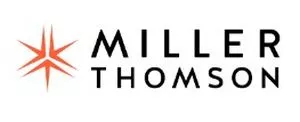- within Technology topic(s)
- with readers working within the Banking & Credit industries
- with Senior Company Executives, HR and Finance and Tax Executives
- with readers working within the Accounting & Consultancy, Banking & Credit and Technology industries
On June 17, 2025, the U.S. Senate approved the Guiding and Establishing National Innovation for U.S. Stablecoins Act(the "GENIUS Act"), in a bipartisan 68–30 vote. While not yet law, the GENIUS Act marks a significant step toward establishing a federal regulatory framework for stablecoins in the U.S.
Enactment of the GENIUS Act is only the first step to guidance on stablecoin regulation. The U.S. continues to refine its approach through additional legislative proposals, including the Stablecoin Transparency and Accountability for a Better Ledger Economy Act of 2025 (the "STABLE Act"). The STABLE Act defines a stablecoin as a digital asset intended for payments or settlement that is either redeemable at a fixed monetary value or marketed as maintaining a stable value relative to a fiat currency. The STABLE Act further proposes that stablecoin issuers be regulated as insured depository institutions to bring stablecoins under traditional banking oversight.
These regulatory advancements have spurred international momentum. The International Organization of Securities Commissions has emphasized the importance of robust oversight for stablecoins. Frameworks such as the European Union's Markets in Crypto-Assets Regulation and the United Kingdom's Financial Services and Markets Act signal an urgency among international jurisdictions to establish harmonized governance of stablecoins.
Canada is slower to adapt to developments in the digital asset industry. However, as stablecoin regulation evolves, entrepreneurs and users of digital currencies must stay informed about the current and potential advancements under Canadian law.
This article is the first in a series by Miller Thomson LLP, examining the legalities surrounding stablecoins and their integration with technology.
U.S. implications on Canadian regulation
The GENIUS Act is expected to have material implications for Canadian issuers permitted to offer stablecoins. In particular, Canadian issuers should consider the following potential impacts on their operations and compliance obligations:
- Cross-border regulatory alignment: The GENIUS Act authorizes the U.S. to enter into bilateral agreements with foreign jurisdictions that maintain regulatory frameworks for stablecoins substantially similar to its own. These agreements aim to facilitate cross-border transactions and support interoperability with U.S. dollar–denominated stablecoins issued abroad. However, Canada does not currently have a comparable regulatory framework in place.
- Direct U.S. regulatory compliance: Even if Canadian legislation becomes harmonized with U.S. legislation, permitted Canadian issuers may still be required to register with U.S. regulators, and comply with U.S. reserve standards, disclosure requirements, and lawful orders.
- Reserve localization and oversight: Where stablecoins are used by U.S. persons, the GENIUS Act may require that related reserves be held within the United States. This subjects Canadian issuers to U.S. jurisdiction and may limit their discretion in how reserves are managed.
While these requirements would increase compliance obligations for Canadian issuers, they may also provide greater regulatory certainty and facilitate enhanced access to the global digital asset market.
Stablecoins in the Canadian legal landscape
The Canadian Securities Administrators (the "CSA") currently maintain that stablecoins, or "value-referenced crypto assets", may be considered securities or derivatives. CSA Staff Notice 21-333 – Crypto Asset Trading Platforms: Terms and Conditions for Trading Value-Referenced Crypto Assets with Clients ("Staff Notice 21-333"), which was issued in October 2023, sets out an interim framework for platforms seeking to facilitate the purchase or deposit of stablecoins. Staff Notice 21-333 outlines the conditions under which registered crypto asset trading platforms may continue offering clients exposure to these assets. For example, among several other requirements, the CSA requires that:
- crypto asset trading platform establish that the stablecoin references the value of the Canadian or U.S. dollar, on a one-for-one basis;
- the issuer makes certain information about the stablecoin publicly available; and
- the issuer file an undertaking with the CSA.
Canada's emerging regulatory approach to stablecoins may offer early insight into the country's broader legislative direction. As international momentum aims to bring stablecoins under traditional banking oversight, instruments such as the Bank Act (Canada) or the Retail Payment Activities Act (Canada) may assist in amending stablecoin regulation in Canada. These acts may become increasingly important as stablecoins integrate with AI technologies that mimic deposit-taking functions in electronic payment systems. The Office of the Superintendent of Financial Institutions is also reportedly developing a robust framework.
In any case, Canadian issuers should not wait for Canada to formally adopt a globally harmonized regulatory regime before taking action. Proactive steps can be taken now to de-risk digital asset activities, strengthen institutional readiness and demonstrate governance. These steps may include:
- Classifying the Token: Seek legal advice to determine whether the token you propose to issue qualifies as a security or derivative under Canadian securities laws. If the token qualifies as a security or derivative, you will likely be subject to regulation by the CSA and the Canadian Investment Regulatory Organization. Stablecoins and proprietary tokens require CSA approval before listing on exchanges.
- Registering as a Money Services Business:Businesses dealing with digital currencies are often required to register with the Financial Transactions and Report Analysis Centre of Canada (FINTRAC) as a Money Services Business.
- Establishing a Compliance Program: To ensure readiness against regulatory scrutiny, businesses should implement anti-money laundering and KYC measures, appoint a compliance officer, provide adequate staff training, conduct regular audits and maintain updated policies.
Canada's call for change
Global developments in stablecoin regulation underscore the virtual currency's shift from fringe assets to mainstream financial tools. Consequently, stablecoin activity in Canada is beginning to take shape.
For example, in December 2024, Circle Internet Financial, LLC ("Circle") became the first stablecoin issuer to file an undertaking with the CSA, as required under Staff Notice 21-333, to permit Canadian crypto asset trading platforms to issue the USDC stablecoin. In the undertaking, Circle asserted USDC is not a security or derivative by international jurisdictions. Instead, Circle asserted that USDC is classified as a virtual currency, e-money, a payment instrument, a stored value or a commodity.
The slow pace of stablecoin regulation in Canada has drawn increasing concern from industry leaders. For example, Lucas Matheson, CEO of Coinbase Canada, has publicly urged the federal government to modernize the country's financial framework by:
- clearly defining stablecoins as payment instruments rather than securities;
- supporting the development of a Canadian-made stablecoin, such as QCAD;
- implementing robust standards for audits, reserves, and consumer protections; and
- facilitating interoperability between stablecoins and the traditional banking system.
In the absence of clear federal guidelines, organizations such as the Canadian Blockchain Consortium have introduced voluntary frameworks. These initiatives draw on globally harmonized regulatory principles, offering a preview of what Canadian businesses may soon be expected to comply with should the government adopt similar standards.
As global markets increasingly modernize traditional payment systems, embracing the transformation of the digital asset industry is no longer optional, it is imperative. With the proper legal guidance, your business can leverage regulatory readiness into a competitive advantage.
The content of this article is intended to provide a general guide to the subject matter. Specialist advice should be sought about your specific circumstances.






